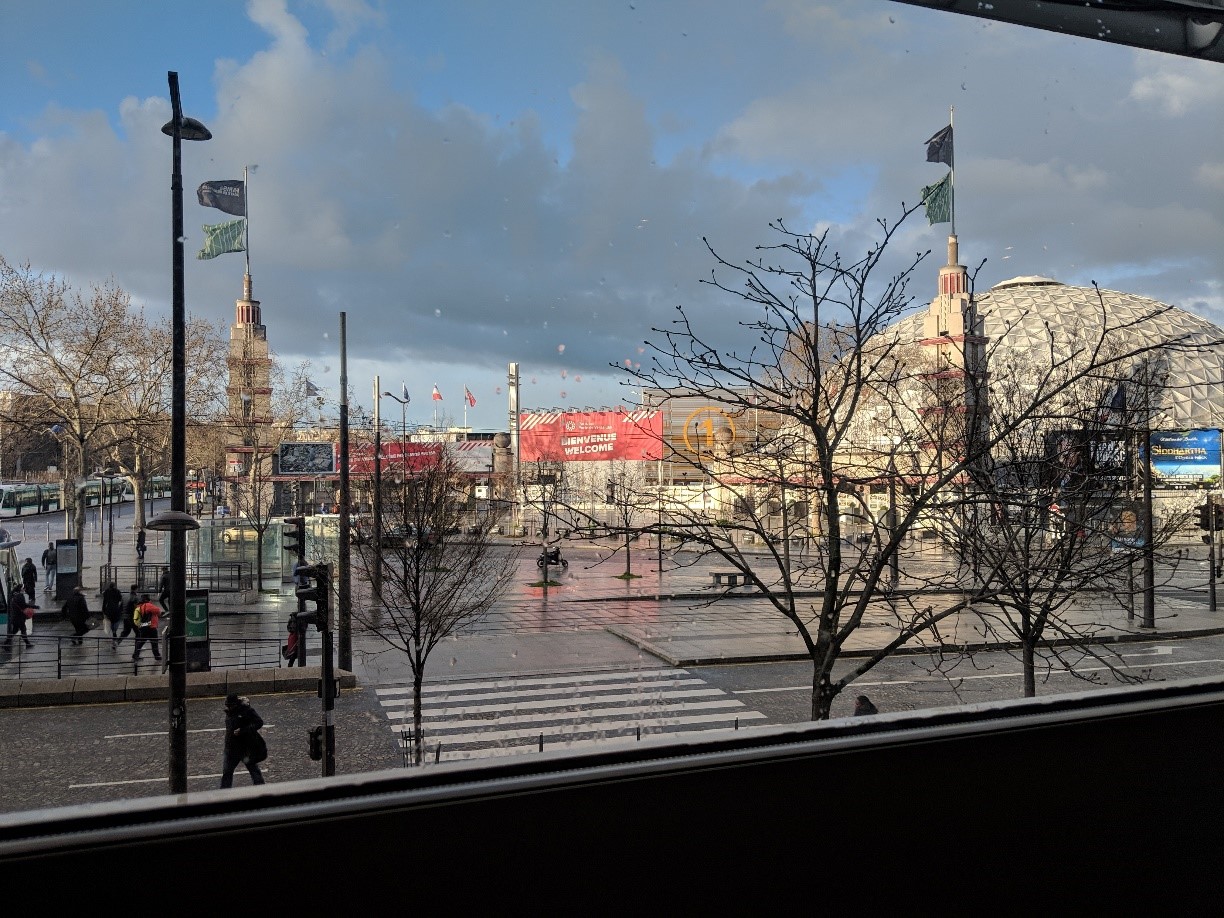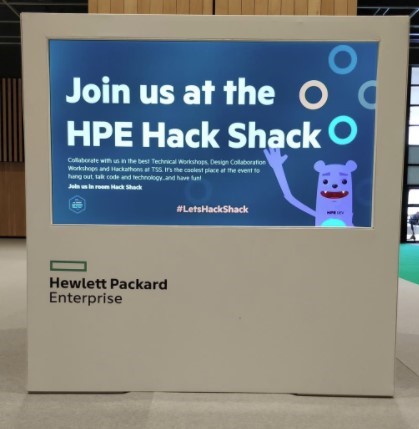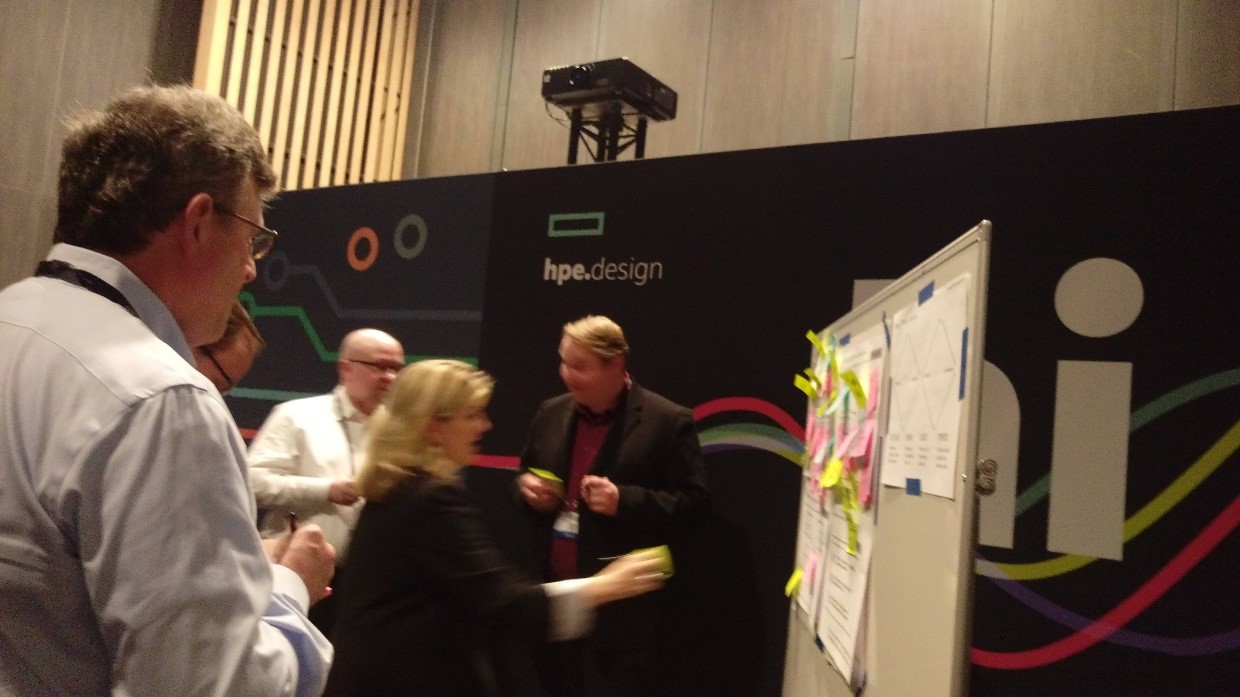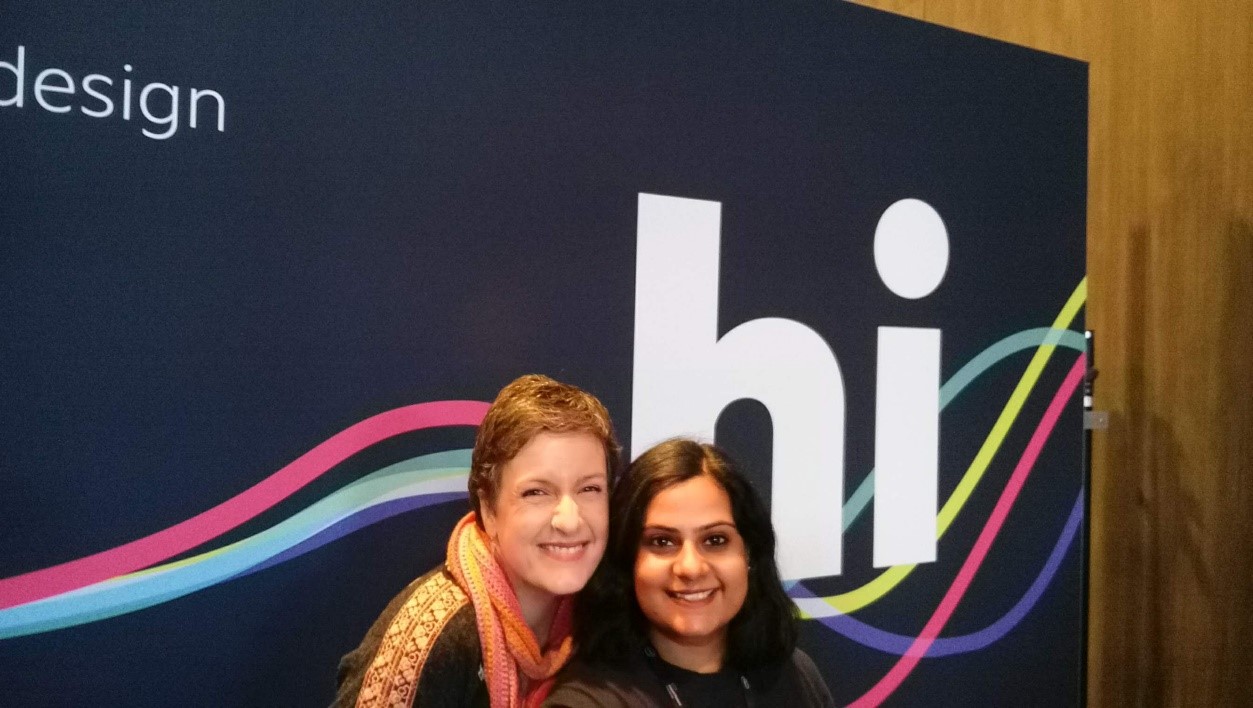Design Thinking Workshops at TSS Brighten a Rainy Week at the Paris Expo
March 28, 2019
The weather at the Technology and Solutions Summit at the Paris Expo at the Paris Expo this past week was definitely a shade of gray to say the least. Rainy, cold, damp, and overcast -- with no sunshine the entire week. That didn’t keep Parul Tyagi and I from our mission to deliver Design Thinking workshops to conference attendees located in the Hack Shack. What is a Hack Shack? It’s a place to hang out, write some code, have a coffee, share ideas, and to brainstorm the next big idea, but most of all to have fun! The overall experience is better captured in this tweet by Didier Lalli, one of the Hack Shack founders.

The Hack Shack format was introduced to code lovers last year at HPE Discover in Las Vegas. The same setup was implemented at HPE Discover in Madrid this past November where we also introduced Design Thinking Workshops as part of the Hack Shack experience. This is where participants explore ideas through a guided ideation framework popularized by the Stanford d.school.
In the Design Workshops, participants learn how to build upon ideas with their teammates by deferring judgement and by applying a few constraints that cause their ideas to “flare,” resulting in even more ideas being generated. Participants are asked to look to unexpected places for inspiration, a technique the d.school refers to as “analogous inspiration.” This is where something unrelated can help inform a solution.
During my d.school training, facilitators Jeremy Utley and Perry Klabahn shared an analogous case study from Fairchild Semiconductor. By looking at the operating model of the floral delivery industry (an unexpected place), Fairchild was able to solve a supply chain issue they were having with a manufacturing component that was continuously on backorder. Neat, huh?

During the brainstorm sessions at TSS, the evaluation of ideas was left to the very end. The purpose of ideation is to get as many ideas out in the open by deferring judgement while focusing on quantity versus quality. Then towards the end of the session, participants evaluate all of the ideas based on a few criteria:
Which ideas are potentially a quick win?
Which ideas are the most disruptive?
Which ideas are the most delightful for end users?
By enforcing constraints in and throughout the process, participants become focused and learn to how to prioritize. Each session is unique, and there are many “a-ha” moments for everyone. Participants are continuously surprised at the volume and variety of ideas this process promotes and often express interest in carrying the process forward into their daily work lives.

By the end of the week, we delivered seven well-attended workshop sessions -- a few were at capacity, which meant we had to turn people away. Over the past 6 months, we were busy delivering Design Thinking to a wide variety of groups throughout HPE . This grassroots effort is just the beginning of a cultural mindset shift to one that is more design-led.
In addition to workshops, we delivered three design talks at the Hack Shack at TSS. We introduced the audience to our recently formed Chief Design Office, led by Bryan Jacquot, VP and Chief Design Officer for the Software Defined and Cloud (SDCG) organization and to our recently formed research function led by Amy Reitz, Ph.D. Additionally, we cited two recent ground-breaking publications that measure the impact of design maturity on the industry. The first, The Business Value of Design by McKinsey&Co, discusses the idea that design adoption is not about the number of designers at a company, but more about design as a cultural mindset. The second, The New Design Frontier by InVision, discusses design maturity across 2,200 companies and 74 industries, highlighting the differences between Visionaries (companies who have adopted design as a business strategy) and Producers (those who simply focus on the pane of glass).
We would love to hear your thoughts on the topic of design maturity. Stay tuned for more reporting from up and coming events such as: Google Cloud Next 19’, HPE Discover Las Vegas and more…
See you next time,
Dana and Parul

Want to see more? Check out Dana’s and Parul’s interview that was recorded and shared on Twitter.
Want to learn more about the Business Value of Design? Download the McKinsey & Co. article here.